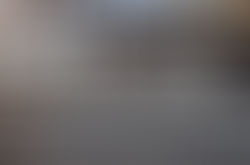top of page
Goose Island
São Paulo
Goose Island Brewhouse, a North American brewery originally from Chicago, brought its brewpub concept to Brazil—a bar where one produces and consumes their own beer. Superlimão and the Canadian firm McKinley Burkart were responsible for developing the project.
The location chosen for the project was Largo da Batata, in line with the brand's stance of seeking to place its brewpubs in areas undergoing intense urban transformation. The first brewhouse in Chicago occupied a space in a former industrial zone undergoing transformation into a young, artistic neighborhood. The chosen building was the last remaining from the Metro expropriation process, with a 10-meter frontage and 40-meter depth, and a side that became the project's facade, facing Largo da Batata.
While Largo da Batata presented itself as a great option, due to numerous transformations over time, the property did not appear to possess the industrial aspect present in the brand's guidelines. After removing these interventions, what remained was the property's original structure, a coconut warehouse from the turn of the century. The choice of materials, such as original bricks exposed to visitors so they can appreciate the transformations the site underwent, concrete, and Shou Sugi Ban burnt wood, combined with the new exposed metal structure, achieved the desired style.
The project sought to address the nature of Goose Island Brewhouse: combining brewery and bar, two distinct programs, from sanitation issues to flow. The project sought to integrate the two parts and took advantage of the presence of the machinery: the brewery is located in the middle of the bar, visible even on the way to the bathroom.
The layout was configured in stages: upon arrival, one sees a reception area that functions as a store and tells a bit of the brand's history. Entering, one sees a large hall, with the brewery as a backdrop, and an outdoor area divided by large metal doors. When opened, these doors become a roof, and the space integrates with the hall. On the opposite side, openings were created to allow natural light to enter. Parallel to this wall, a large gutter was built containing boa constrictors, which over time take over the exposed facilities. On the way to the second floor, there is a room with specialty beers aging in barrels, creating a new category of beer and consumption methods.
On the second floor is the beer garden, which offers a unique view of Largo da Batata in a large outdoor area protected by a wooden pergola with a retractable roof. The space features a second bar, a grill integrated into this area, and an orchard. The remainder of this floor is occupied by technical areas and the kitchen.
The building has two facades with different aspects. The first, the entrance, has a more vertical aspect and evokes the original construction. The Largo da Batata side is quite horizontal, allowing a glimpse of the transformation of the old warehouse combined with the brewery with visible white tanks above it. Graffiti artist Nove (Digital Orgânico) was invited to develop a panel that provides a present-day reading of the region, printing many colors and bringing a Brazilian touch to the project.


DATA SHEET
Architecture: Superlimão (Brazil) and McKinley Architects (Canada).
Project Team: Lula Gouveia, Thiago Rodrigues, Antonio Carlos Figueira de Mello, Mark Burkart, Walter McKinley, Jenn Lembke, Landon Anholt, Julia Regis Bittencourt, Pedro Luna, Maria Clara Rodrigues.
Location: São Paulo, Brazil
Year: 2016
Area: 750m2
Photographs: Maíra Acayaba
Address: R. Baltazar Carrasco, 187 - Pinheiros, São Paulo - SP, 05426-060
bottom of page





































